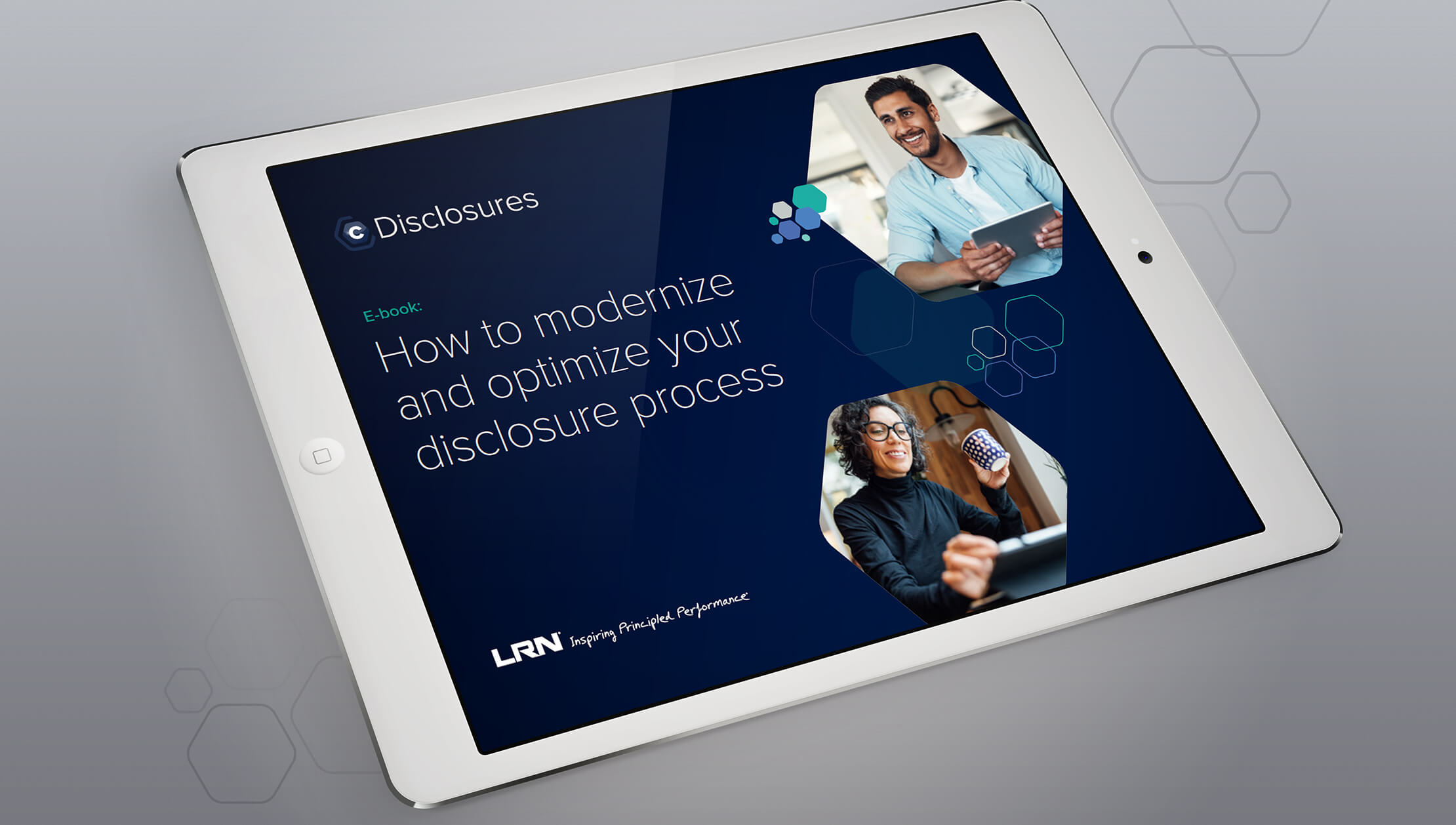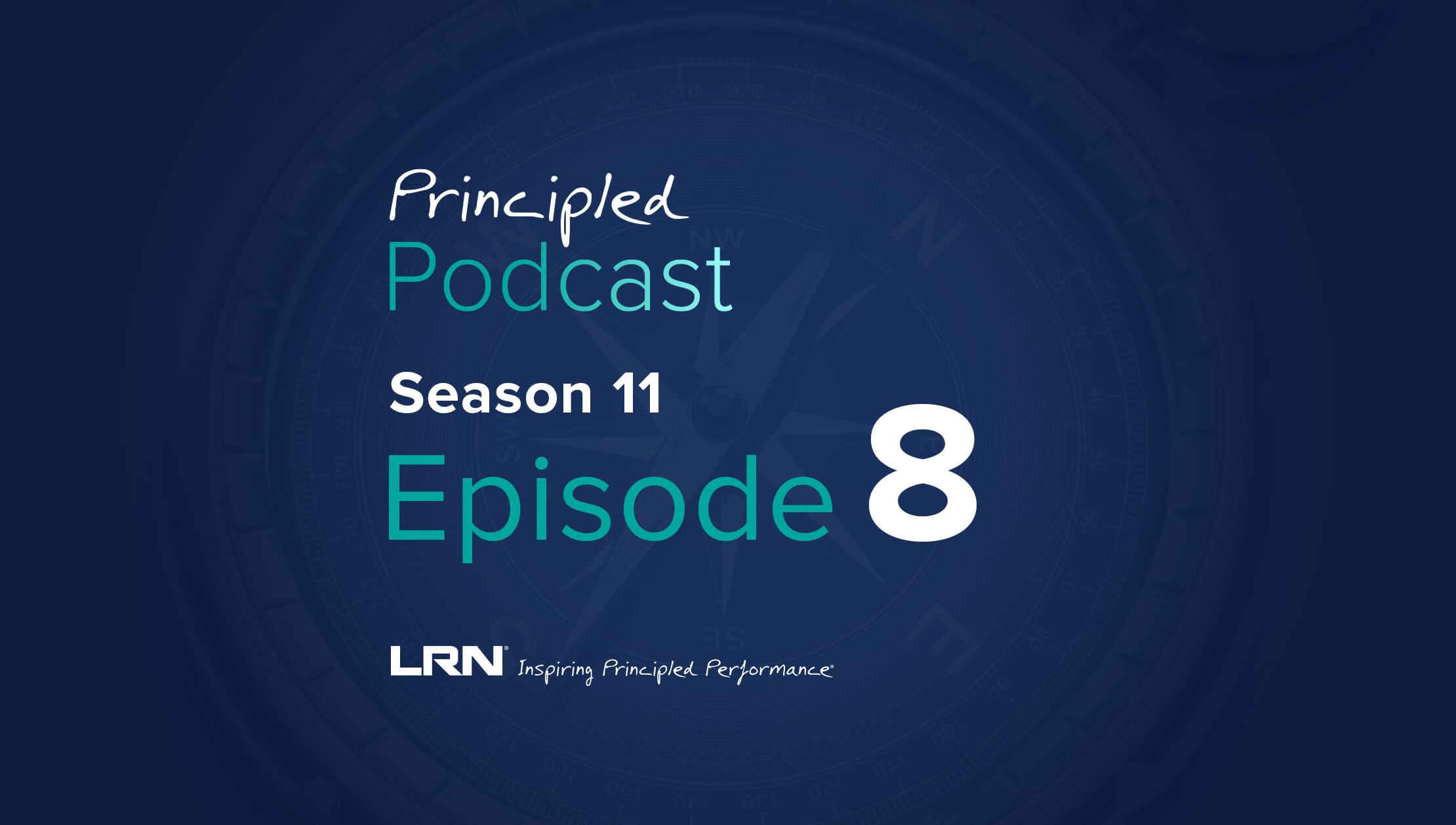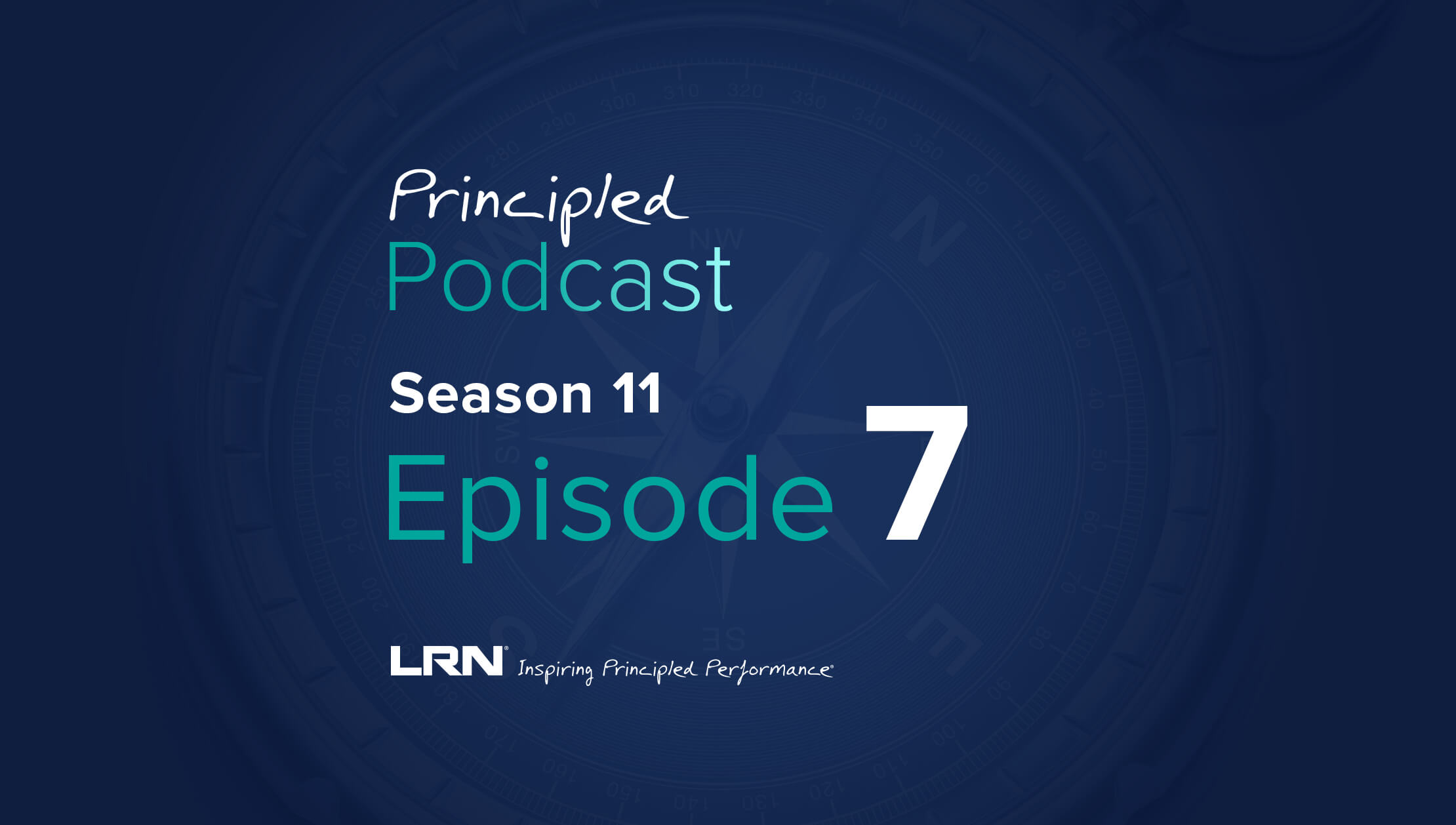Your existing workplace disclosure processes may be working "well enough," but that does not necessarily mean that they are functioning at peak efficiency. Today, employers need insight into potential risk exposure, and it’s increasingly important to gather information from employees directly. Having an automated and centralized process for collecting and managing disclosures is critical for establishing the best insight into organizational risk. LRN's new e-book, How to modernize and optimize your disclosure process, outlines practical steps to help you streamline your workplace disclosure forms and processes.
What is an employee disclosure?
Employee disclosure forms are designed to offer insights into a variety of critical factors that could influence the employee's job or performance, or the company's exposure to risk. Examples of things that could require a workplace disclosure form include:
- Supplier and contract disclosures
- Potential conflicts of interest
- When an employee receives a gift from a supplier
- Family connections in the department or business
- Investments or employment with other companies 65
These forms make it easier for employees to report and handle potential issues as they arise. And can be administered by the organization to be required as part of a collect cycle, or available to employees to submit as events occur.
Why having a digital disclosure process matters
Many organizations are still relying on excel, email, or other homegrown solutions to track disclosures, attestations, and certifications. No one wants to be scrambling to find communications in disparate places, and never being sure that all of the communications were found. Processes like this make the day-to-day handling of escalations difficult and investigations cumbersome and stress inducing.
Organizations need a streamlined and centralized disclosure process. A single source of truth for disclosure reporting saves time and increases transparency into risk. According to the LRN 2022 Ethics & Compliance Program Effectiveness Report, high-impact organizations across the globe are focused on simplifying and digitizing their risk mitigation efforts, which aligns to recent regulatory updates to evaluation criteria. In fact, 66% of these programs said that greater use of digital certifications s is a high priority for the coming year.
Improving your workplace disclosure forms and processes
The LRN e-book How to modernize and optimize your disclosure process lays out four challenges with managing disclosures, and provides practical information on how to overcome those challenges. Adopting the disclosure process improvements outlined in this e-book can help increase insight into risk exposure, save time, and ensure better communication with employees.Below we cover the challenges and provide insights into how to make analyzing and understanding risk exposure more complete.
1. Create a flexible multichannel collection process
There are two key times when employees may want to submit relevant data as part of the disclosure process. First, employees may need to submit annual information—including conflicts of interest, new policy rollouts, or confirmation of existing policies.
In other cases, employees may need to provide information on an as-needed basis, when a triggering event occurs: when a family member starts working for a competitor, for example, or a salesperson or other contact within the company receives an unexpected gift from a supplier.
In the case of both types of disclosures, the process should be as simple and streamlined as possible. Make sure that employees have easy access to on-demand disclosures. Ideally, you should make sure to reinforce the importance of those forms, both through regular employee training and through your management team. Furthermore, you should make sure that employees have several avenues available for submitting that information so it is easy to access.
2. Eliminate manual processes
Too often, employers are still relying on manual collection methods or clunky Excel spreadsheets to collect relevant information. Those strategies, however, may leave you scrambling to collect and report that data when you need it.
First, make sure that you have a single disclosures tool that collects all relevant data. By keeping information in one place, it’s easier to access that data when you need it.
Next, create clear, accessible questionnaires that collect the information you need from your employees. Avoid asking for any irrelevant information, and make sure that employees can easily understand and answer the questions as written.
Finally, automate the process as much as possible. Keep communications available within a single, standard system that has workflows in place that will allow relevant individuals and entities within your company to comment on that data or pass it through as needed.
3. Automate the prioritization process
In order to clearly identify the disclosures that most need your attention, take the time to automatically prioritize them behind the scenes. Some disclosures are higher risk and need a fast response. Others may allow you more time to deal with the issue at hand. Make sure your system knows how to tell which one is which, including when to flag high-risk items. What type of information could signal a high-priority flag in your organization? For example, you might to flag any conflicts of interest with your major competitors as higher importance than an employee who has recently taken on a side gig that has no relationship to your current work. By automating this process behind the scenes, you can feel much more confident that your compliance teams are addressing any high-priority items as quickly as possible.
4. Optimize the reporting process
Effective reporting helps you analyze risks, share insights with senior management, and identify red flags easily. Consider how you need to organize your information in order to have the right data at your fingertips. For example:
- Types of disclosures
- Policy attestation rates
- Disclosures by population
- Audits
- Resolution times
- Resolution outcomes
- Trending of variant responses
The key takeaway
Using the right technology for managing the disclosure process has become increasingly critical, particularly as information has become more readily available. Download our e-book to learn more about the workplace disclosure process and how to optimize it, or check out these additional resources:
- 6 questions to ask when choosing your conflict-of-interest disclosures tool
- Why disclosures and certifications are critical to effective E&C programs



